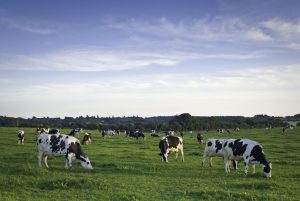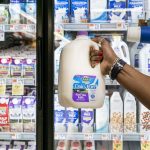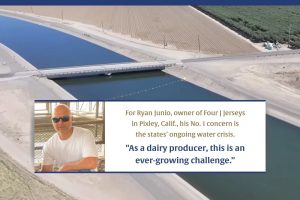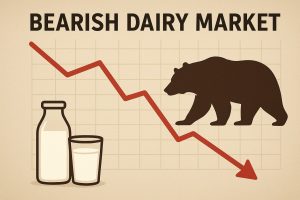
Monica Ganley, analyst with the Daily Dairy Report and principal of Quarterra, a consulting firm in Argentina, says that “on the heels of an incredibly difficult year, Mexico likely still faces tough times ahead.”
By most estimates, Mexico’s gross domestic product (GDP) contracted by about 9% last year, the worst economic the country has seen since 1929, the start of the Great Depression. Last year’s steep economic pullback in Mexico was driven in large part, but not entirely, by the pandemic and stay-at-home orders.
“Mexico’s economic issues predate the pandemic, raising doubts about the country’s ability to recover from the crisis,” Ganley says. “Embroiled in trade tensions and facing tumbling foreign investment, Mexico’s GDP had been slipping for over a year prior to the country’s first confirmed case of Covid-19. These declines were exacerbated by stay-at-home orders that stalled manufacturing and eviscerated Mexico’s tourism and hospitality sector.”
The coronavirus and its economic repercussions have also depressed dairy consumption in Mexico, a country of about 128 million people, Ganley notes. During most of 2020, Mexico’s dairy imports paled in comparison to 2019 imports. “The cumulative volume of U.S. dairy exports to Mexico fell 16% over the first 11 months of 2020,” compared with the same period in 2019, she says.
U.S. exports to Mexico of nonfat dry milk of 576.9 million pounds for the first 11 months of 2020 were 14.4% less than the comparable period a year earlier, and aggregate cheese exports were the weakest since 2016.
While Mexico’s economy started to improve in the third quarter of 2020, total output has not recovered to 2019 levels. “GDP is anticipated to return to growth in 2021 but recovering the Mexican appetite for imported dairy products could be slow,” Ganley says. “Large swaths of the population remain unemployed or underemployed and are likely to see tight household budgets squeezed further as the government reduces assistance programs amid austerity measures.”
According to Deloitte Insights, Mexico’s partial economic recovery has already helped to bring 10.2 million people back to work, but nearly 2.3 million workers have still not reentered the workforce. Moreover, the number of people working part-time hours has doubled to 15.7% in October compared to only 7.5% in January 2020.
In December, Mexico announced it was raising the 2021 minimum wage by 15% to the equivalent of about $7.15 (U.S.), after employing a 20% increase in 2020. Workers in the special economic areas near the U.S. border where many U.S. companies operate facilities received a bigger boost. While this will provide workers more spending power, some analysts worry it could lead to inflation.
Milk production in Mexico has also been expanding. This year’s annual output is estimated to be at least 2% above 2019’s, which will allow the country to meet more of its domestic demand. “No doubt, Mexico will continue to retain its top spot on the leaderboard of U.S. dairy export destinations, but with U.S. milk production rising at a rapid clip and Mexico’s demand outlook still very uncertain, the United States might need to look farther afield to move excess product in 2021,” she says.























